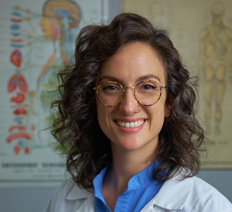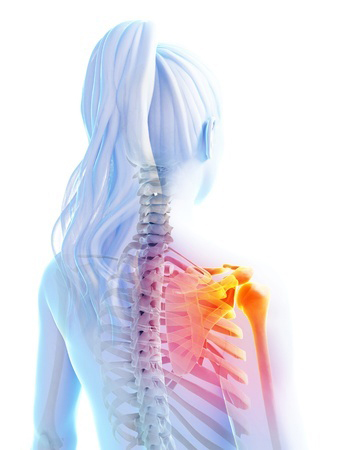Dr. Ron’s Favorite Raw Carrot Juice Recipe by Dr. Ron Cherubino
4 Ways to Avoid Becoming a Statistic in the Opioid Epidemic
4 Ways to Avoid Becoming a Statistic in the Opioid Epidemic
– by Dr. Grace Cherubino, D.C. July, 2023
The United States is currently the number one country in the world for prescriptions, overdoses, and deaths related directly to opioids.

Let’s talk about my advice on how to avoid becoming a statistic and become more informed
when it comes to the current opioid epidemic.
1. Seek care from a CAM Doctor first, before seeking pharmaceutical intervention:
Complementary and Alternative Medicine (CAM) has become an effective way of addressing a myriad of health concerns and often succeeds where common medicine falls short.
Mainstream medical organizations are beginning to recommend that the public seek Complementary and Alternative Medicine before opioids are prescribed.
As an example, the NIH (National Institutes of Health), and the Joint Commission, (a nonprofit that accredits more than 21,000 U.S. health care organizations and programs), are recommending CAM approaches to the public before prescribing any opioids.
In spite of the fact that there is a time and a place for medications, potentially harmful side effects are always present. All pharmaceuticals unfortunately do come with side-effects and risks. And this is especially true with highly neuro-addictive drugs like opioids.
Unfortunately, most people seeking care for acute or chronic pain are immediately prescribed an opioid with no consideration given to a CAM approach, before or after.
The Doctors of Complementary and Alternative Medicine
Complementary and Alternative Medicine (CAM) includes all of the doctors and practitioners that are outside of “common western medicine”.
Think: Chiropractic, Naturopathy, Traditional Chinese Medicine, Ayurveda, Herbology, Clinical Nutrition, etc.
These practitioners and the services they utilize do not use drugs or surgery, and are often more holistic and “big picture” about patient care. This means that multiple factors of human health will be addressed and investigated to best help the patient with their pain, symptoms, or health goals.

Exercise, yoga, acupuncture, mindfulness, and meditation are commonly used in Complementary Alternative Medicine (CAM) practices.
Why am I suggesting that you see a Chiropractic Physician CAM practitioner FIRST?:
Well, as a Doctor of Chiropractic, I am a primary care physician, with extensive training in the human sciences, disease and diagnosis. After I examine a patient, I work with them on what we find, and I may treat, co-manage or outright refer the patient to any and all medical specialists should their case need more invasive procedures or techniques.
Also, chiropractors spend significantly more time with their patients than their medical doctor (MD) counterparts – the National Institutes of Health (NIH) has published two studies that found an association between shorter visits and increased rates of medication prescriptions. So, chiropractors have a better opportunity to analyze and differentially diagnose patients, without being rushed or having the crutch of pharmaceuticals to lean on.
2. Get an accurate diagnosis – find out what the UNDERLYING CAUSE of the pain is.
The idea here is to correct the cause of the problem. The pain will go away once the underlying disease / injured tissue / dysfunction, etc. is addressed. That seems obvious, right?
Often, an opioid is prescribed when a diagnosis is NOT reached and Vicodin or Oxycontin is prescribed to just “dampen” the signal to the brain that interprets painful stimuli. (That is equivalent to taking the batteries out of your fire alarm “because it is loud and annoying!” without addressing the smoke billowing in from the next room, or locating the fire! The “fire” here is the CAUSE of the alarm sounding. The “alarm” is the PAIN).
I have seen this first-hand in ER’s when bringing friends for minor painful conditions (because it is faster than getting on a waiting list to see their PCP – what an insane country we live in!), and they get diagnosed with a ‘pain code’ instead of a diagnosis and a piece of paper to bring to the pharmacy. So, what else can you do?
3. Use non-pharmacological pain-relief
Alternative medicine doctors ( i.e. Traditional Chinese Medicine, Chiropractic, Naturopathy, and other Holistic doctors…) have many different techniques and options for reducing pain without the use of drugs. This may involve passive therapies such as electrical stim, heat/cold therapy, acupuncture, traction, massage, and lifestyle/diet approaches including tinctures and herbs, nutritional supplements, rehabilitative exercises, yoga, stretching, and meditation/mindfulness practices.
The key with CAM professionals is the relationship with the patient’s case and condition(s), so that they can educate the patient and guide them to palliative care that is non-invasive and still effective. Different humans respond to different things. For example, in some patients, it is reported that opioids do not actually minimize pain, they just activate reward and pleasure centers in the brain so that the patient Doesn’t Care anymore about the pain, no matter how severe it remains. There have also been reports that in some patients, opioids make their chronic pain WORSE. (Interesting, huh?)
4. If and when you are prescribed an opioid, take it sparingly, and KNOW THE RISKS
So, I should say right away, that the advent of Morphine in medicine made it possible to make patients with INTRACTABLE, severe, painful conditions be more comfortable, when, say, having their legs amputated, or they were being treated for 3rd degree burn wounds. For extreme cases, opioids may be reasonable, and can be a useful tool. 
Now, there is A LOT of information about the current U.S. Opioid Epidemic – far too much to cover here – but I have included “Further Reading” for those of you who want a more thorough look at the present challenges we face as a nation with our healthcare and medical practices.
In short, 2017 was a DEADLY year for opioid overdoses…
…mostly for people in pain who were prescribed an opioid by their doctor, and died because of “needing” to increase the dose to have the same analgesic affect (this is called building a “tolerance”), and dying because of the increased dosing. And, as I quoted before, The U.S. is currently the number 1 country in opioid prescriptions, overdosing, and deaths IN THE WORLD.
In light of this, it is important to know what the drugs are called, because if you’re thinking “look out for opioids,” and are prescribed “Darvocet”, then you might not realize that Darvocet is an opioid. So, I have provided a list (scroll down for list).
The reasons for this are multifaceted, but a few important factors are: no universal healthcare, so most insurances cover pills over real services, pharmaceutical companies can market directly to the public (which is illegal in other countries, like England, for example), and medical doctors are urged to spend less and less time with patients, SO, if they only have 4 minutes facetime with a person, it is pretty hard to give a thorough diagnosis, and it’s pretty easy to give a prescription for a painkiller that will, no matter what the cause, “kill” the perception of pain. Note: MD ‘s are important, but are under ridiculous constraints in our US healthcare system!
Keep reading for stats and news quotes I’ve gathered on the topic, and if you’re really curious, follow the links under “more reading” to learn all you can about this national healthcare problem.
So, there you have 4 steps to avoid becoming addicted, overdosing, or dying from opioids.
More U.S. Opioid Epidemic Facts:
The Center for Disease Control (CDC) states: “Since 1999, opioid prescription deaths have increased by more than five times, and over 200,000 people have died from prescription opioids.(Aug 30, 2017)”. 
“The scale of America’s opioid epidemic is shocking. DrugAbuse.com has a list of the “7 most addictive Prescription Medications,” and the first 5, (of only 7!) are all Opioids.
-”In 2010, opiate painkillers, such as morphine, OxyContin, and Vicodin, were tied to almost 60% of drug overdose deaths”. – drugabuse.com
“…In 2016 alone, drug overdoses killed more Americans than the entire Vietnam War and car crashes, gun violence, and HIV/AIDS ever did in a single year. In total, more than 170 people are estimated to die from overdoses every day in the US, and most of the deaths are linked to opioids.” (Vox media)
The Opioid epidemic “… is now the deadliest drug overdose crisis in US history, is killing tens of thousands each year, and is estimated to kill hundreds of thousands more in the coming decade.”- (vox media)
“Stanford pain specialist Sean Mackey cautions that opioids should not be a first-line treatment due to the grave risks, and alternatives should be tried first.” – (vox media)
Preventing overdose deaths STARTS with doctors prescribing FEWER opioids, and finding alternatives – The CDC states that guidelines for prescribing opioid drugs in a primary care setting have been updated because “Previous guidelines focused safety precautions on “high risk patients,” however, opioids pose risk to all patients”.
The most common opioids prescribed by U.S. doctors:
- Oxycodone (OxyContin)
- Hydrocodone (Vicodin)
- Morphine (*precursor to heroine)
- Codeine
- Demerol
- Darvocet
Author’s note: I began writing this piece in 2017, over 5 years ago, and sadly, it is just as relevant as ever today.
The current opioid overdose deaths in the USA are 79,770 (for the year of 2022).
The CDC reports a decrease from 80,997 to 79,770 from 2021 to 2022.
About the author: Dr. Grace Cherubino is a chiropractic physician who treats patients first and conditions second.
Dr. Grace practices at Cherubino Health Center, which is located just outside of Boston, Massachusetts in historic MetroWest. She is also the clinical director of the
Spine Center at CHC.
Dr. Grace is ever aware of the relationship between mind and body in health and healing. She consistently helps her patients uncover the root cause of their illnesses and finds workable strategies to address each patient’s needs. This is achieved through both treatment at Cherubino Health Center and education that includes at home rehabilitative activities and practical coping strategies.

Dr. Grace is highly skilled in her areas of expertise.
She employs thoughtful, research-driven healthcare with clear goals and consistent results.
Visit Dr. Grace’s webpage
Sources and Further Reading on the Topic:
- Drug overdose death rates – National Institute on drug abuse. https://nida.nih.gov/research-topics/trends-statistics/overdose-death-rates
- National University of Health Sciences. Joint Commission calls for hospitals to provide complementary and alternative medicine for pain (https://www.nuhs.edu/news/2017/10/joint-commission-calls-for-hospitals-to-provide-complementary-and-alternative-medicine-for-pain/)
- DrugAbuse.com , 7 Most Addictive Medications https://drugabuse.com/the-7-most-addictive-prescription-medications/
- ASAM , American Society of Addiction Medicine, The prescribing rates for prescription opioids among adolescents and young adults nearly doubled from 1994 to 2007. “https://www.asam.org/docs/default-source/advocacy/opioid-addiction-disease-facts-figures.pdf ”
- NPR , Questioning A Doctor’s Prescription For A Sore Knee: 90 Percocets https://www.npr.org/sections/health-shots/2017/11/22/565697494/questioning-a-doctors-prescription-for-a-sore-knee-90-percocets
- NPR 2 , Should Hospitals Be Punished For Post-Surgical Patients’ Opioid Addiction? (https://www.npr.org/sections/health-shots/2017/11/26/558792020/should-hospitals-be-punished-for-post-surgical-patients-opioid-addiction )
- Vox media: America’s huge problem with opioid prescribing, in one quote
You have to double the amount of opioids Japan consumes five times to come close to the US. (https://www.vox.com/science-and-health/2017/9/18/16326816/opioid-epidemic-keith-humphreys) - Hedegaard H, Warner M, Miniño AM. Drug overdose deaths in the United States, 1999–2016. NCHS Data Brief, no 294. Hyattsville, MD: National Center for Health Statistics. 2017/
- Wide-ranging online data for epidemiologic research (WONDER). Atlanta, GA: CDC, National Center for Health Statistics; 2017. http://wonder.cdc.gov
BBC.com , Why Opioids Are Such an American Problem (http://www.bbc.com/news/world-us-canada-41701718)



